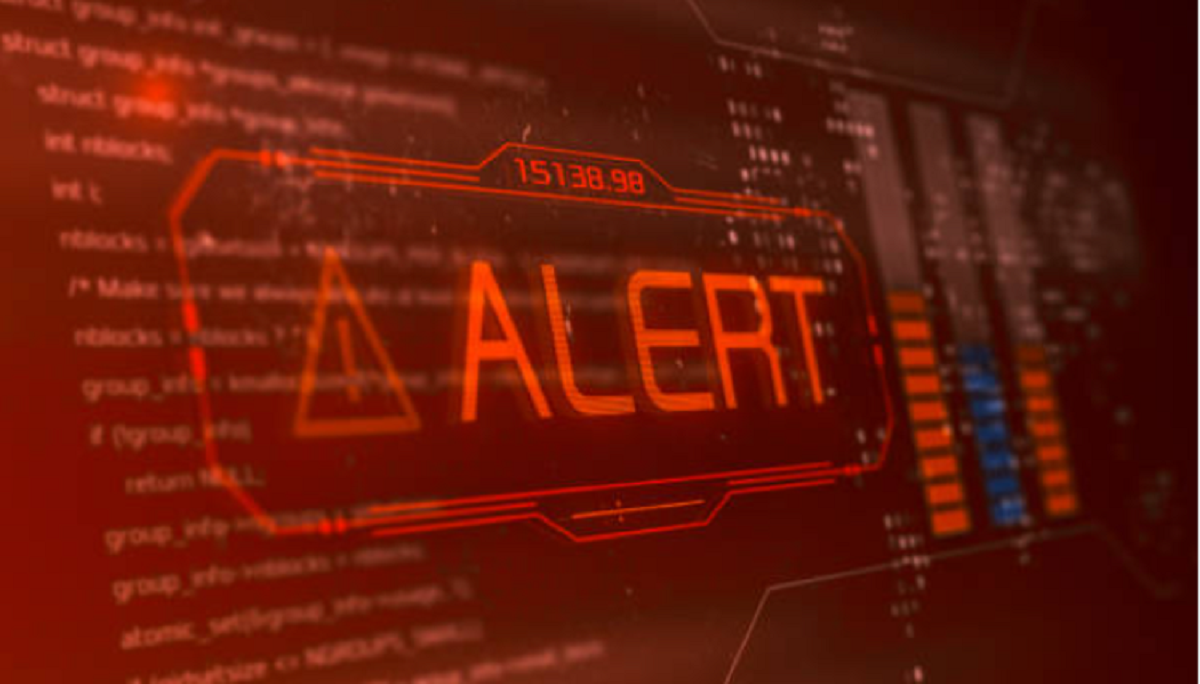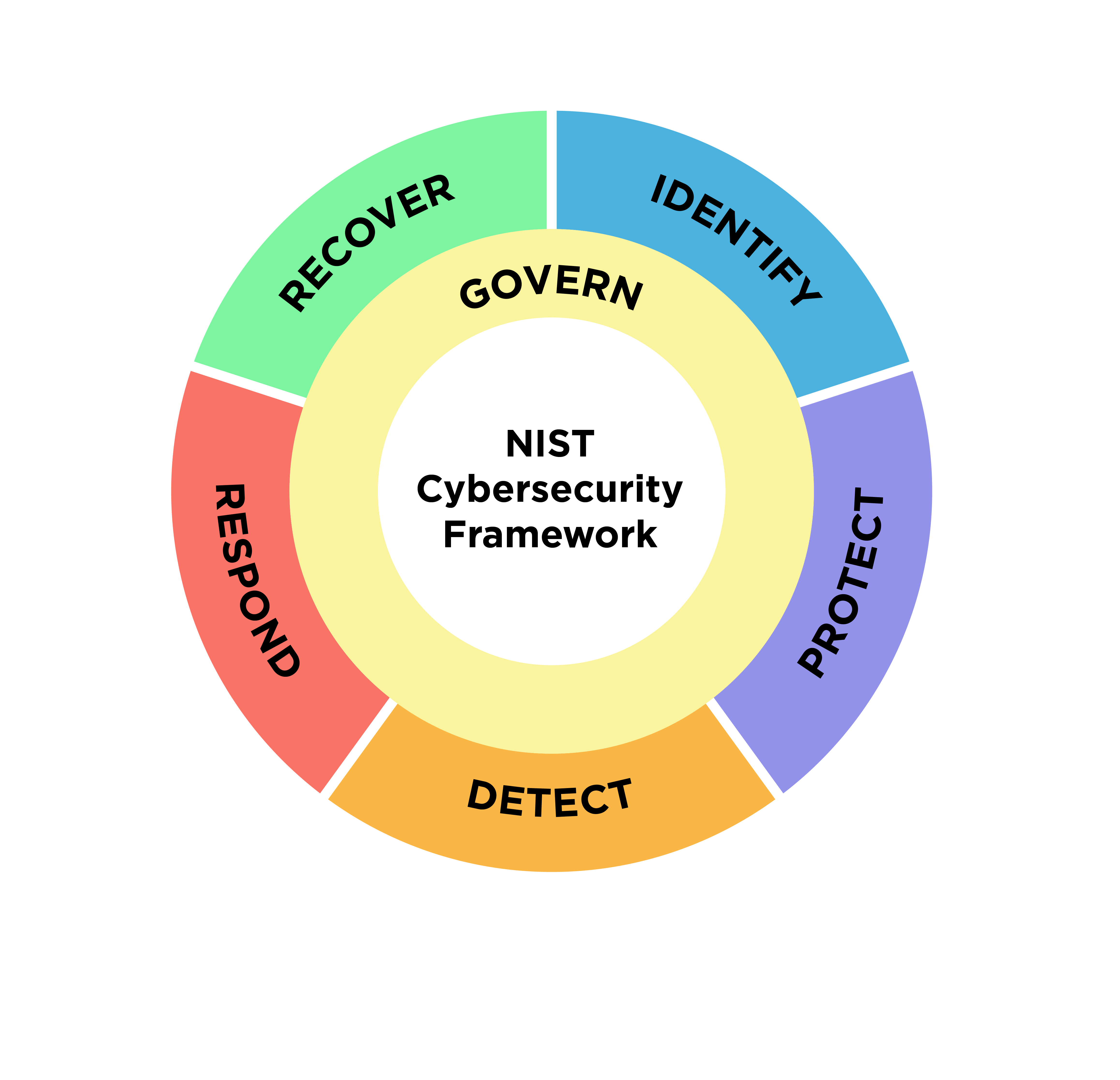Introduction
Welcome to the world of cybersecurity governance, where the protection of digital assets has become paramount in our increasingly interconnected society. As technology continues to advance rapidly, companies and organizations are faced with the challenge of safeguarding their sensitive information from cyber threats. This is where cybersecurity governance comes into play.
Cybersecurity governance refers to the set of policies, processes, and procedures implemented to manage and organize an organization’s cybersecurity efforts. It involves the overall strategy and framework used to identify, assess, and mitigate risks, as well as establish controls for protecting digital assets. By implementing an effective cybersecurity governance framework, businesses can minimize the likelihood and impact of cyber incidents while ensuring the confidentiality, integrity, and availability of their critical data.
In today’s digital landscape, cybersecurity governance is of utmost importance. Cyberattacks have become more sophisticated and frequent, posing significant risks to organizations of all sizes and sectors. The consequences of a successful cyber attack can be devastating, ranging from financial loss to reputational damage and legal implications. Therefore, having a robust cybersecurity governance framework in place is crucial to safeguarding organizational assets and maintaining the trust of customers, partners, and stakeholders.
Cybersecurity governance encompasses various components and activities that work together to protect an organization’s information assets. This includes establishing cybersecurity policies and procedures, conducting regular risk assessments, implementing effective incident response and recovery plans, ensuring compliance with relevant laws and regulations, and aligning cybersecurity efforts with overall business strategy. Each of these components plays a vital role in creating a comprehensive cybersecurity governance framework that helps mitigate risks and safeguard critical data.
In this article, we will delve deeper into the various components of cybersecurity governance and discuss their importance. We will also explore how organizations can create a robust cybersecurity governance framework, implement cybersecurity policies and procedures, manage cybersecurity risks, and ensure compliance with legal and regulatory requirements. Furthermore, we will examine the role of cybersecurity governance in driving overall business strategy and highlighting its significance in today’s rapidly evolving digital landscape.
Defining Cybersecurity Governance
Cybersecurity governance can be defined as the framework and processes that organizations employ to manage and oversee their cybersecurity efforts. It involves establishing policies, procedures, and controls to mitigate cyber risks and ensure the protection of digital assets.
At its core, cybersecurity governance focuses on establishing clear lines of responsibility and accountability for cybersecurity within an organization. It encompasses the strategic planning and allocation of resources to effectively manage cybersecurity risks, protect critical information, and respond to cyber incidents appropriately.
A key aspect of cybersecurity governance is the establishment of policies and procedures that guide the organization’s approach to cybersecurity. These policies define the organization’s goals, objectives, and expectations related to cybersecurity, as well as the roles and responsibilities of individuals involved in its implementation and enforcement.
Another important element of cybersecurity governance is risk management. Organizations must identify and assess the potential risks and vulnerabilities that could impact their cybersecurity posture. This involves conducting regular risk assessments, analyzing the likelihood and potential impact of cyber threats, and implementing appropriate controls to mitigate those risks.
Additionally, cybersecurity governance encompasses incident response and recovery. Organizations must have plans and procedures in place to detect, respond to, and recover from cyber incidents effectively. This includes establishing incident response teams, implementing incident response plans, and regularly testing and updating these plans to ensure their effectiveness.
Compliance with legal and regulatory requirements is another critical component of cybersecurity governance. Organizations must understand and adhere to applicable laws and regulations related to cybersecurity, data protection, and privacy. This involves staying informed about changes in regulations, conducting regular audits and assessments to ensure compliance, and addressing any issues or vulnerabilities that may arise.
Overall, cybersecurity governance is about ensuring that organizations have the necessary framework, processes, and controls in place to protect their digital assets from cyber threats. It involves strategic planning, risk management, incident response, and compliance with laws and regulations. By implementing effective cybersecurity governance, organizations can proactively manage risks, protect critical information, and foster a culture of cybersecurity awareness throughout the entire organization.
Importance of Cybersecurity Governance
In today’s digital landscape, the importance of cybersecurity governance cannot be overstated. With the increasing frequency and sophistication of cyber threats, organizations must prioritize the protection of their digital assets. Here are some key reasons why cybersecurity governance is crucial:
-
Data protection: Cybersecurity governance ensures the protection of sensitive data, including customer information, intellectual property, and financial records. By implementing robust security controls and procedures, organizations can safeguard this information from unauthorized access and prevent data breaches.
-
Risk management: Cybersecurity governance allows organizations to identify, assess, and manage cybersecurity risks effectively. By conducting regular risk assessments, organizations can identify vulnerabilities and implement appropriate controls to mitigate these risks. This helps minimize the likelihood and impact of cyber incidents.
-
Compliance: With the increasing number of regulations and laws related to cybersecurity and data privacy, organizations need to ensure compliance with these requirements. Effective cybersecurity governance helps organizations stay updated with the latest regulations, perform regular audits, and implement necessary measures to remain compliant.
-
Reputation and trust: A successful cyber attack can cause major reputational damage to an organization. Customers, partners, and stakeholders expect organizations to take cybersecurity seriously and protect their sensitive information. By demonstrating a strong cybersecurity governance framework, organizations can build trust and maintain their reputation in the market.
-
Business continuity: Cybersecurity incidents, such as ransomware attacks or data breaches, can disrupt normal business operations and cause significant financial loss. Cybersecurity governance helps organizations develop incident response and recovery plans, ensuring the ability to quickly respond to and recover from cyber incidents, minimizing downtime and preserving business continuity.
-
Competitive advantage: Organizations that prioritize cybersecurity governance can gain a competitive advantage in the marketplace. Demonstrating a strong commitment to cybersecurity gives customers, partners, and stakeholders confidence in the organization’s ability to protect their data. This can lead to increased trust, a positive brand image, and a competitive edge over competitors.
By implementing effective cybersecurity governance, organizations can protect their digital assets, manage risks, ensure compliance, build trust, maintain business continuity, and gain a competitive advantage. It is a critical component of a comprehensive approach to cybersecurity and is essential in today’s evolving threat landscape.
The Components of Cybersecurity Governance
Cybersecurity governance comprises various interconnected components that work together to safeguard an organization’s digital assets. These components help establish a structured approach to cybersecurity and ensure that all necessary measures are in place to protect against cyber threats. Let’s explore the key components of cybersecurity governance:
-
Policies and Procedures: Policies and procedures form the foundation of cybersecurity governance. They define the organization’s approach to cybersecurity and outline the expectations, roles, and responsibilities of employees. These policies cover areas such as data protection, access control, incident response, and employee awareness training. Procedures provide step-by-step instructions for implementing and enforcing these policies effectively.
-
Risk Management: Risk management is crucial in cybersecurity governance. It involves identifying potential cyber risks, evaluating their likelihood and impact, and implementing controls to mitigate these risks. This includes regular risk assessments, vulnerability management, and the development of a risk management framework tailored to the organization’s needs.
-
Security Controls: Security controls are measures put in place to protect an organization’s systems, networks, and data. These controls can include firewalls, intrusion detection systems, antivirus software, access controls, and encryption. They are designed to prevent, detect, and respond to cyber threats, and are implemented based on the organization’s risk tolerance and regulatory requirements.
-
Incident Response: Incident response is the process of handling and managing cybersecurity incidents. It involves clear procedures for detecting, analyzing, and responding to incidents in a timely and effective manner. Incident response plans outline the roles and responsibilities of personnel, communication protocols, and steps for containing and mitigating the impact of an incident.
-
Awareness and Training: Ensuring that employees are aware of cybersecurity risks and understand how to protect against them is vital. Organizations should provide regular training and awareness programs to educate employees about best practices, common threats, and their roles in maintaining a secure environment. This helps foster a culture of cybersecurity throughout the organization.
-
Compliance and Legal Considerations: Compliance with applicable laws and regulations is essential in cybersecurity governance. Organizations must stay up-to-date with changing regulations, such as data protection and privacy laws, and implement measures to ensure compliance. This includes regular audits, risk assessments, and potentially working with legal advisors to navigate regulatory and legal requirements.
-
Monitoring and Continuous Improvement: Effective cybersecurity governance requires ongoing monitoring of security controls and systems. This allows organizations to detect and respond to emerging threats. Continuous improvement involves reviewing and updating cybersecurity policies, procedures, and controls based on new threats, technologies, and best practices.
By addressing these components in their cybersecurity governance framework, organizations can establish a robust and comprehensive approach to protecting their digital assets. Each component plays a crucial role in enhancing the organization’s cybersecurity posture, managing risks, and ensuring the confidentiality, integrity, and availability of critical data.
Creating a Cybersecurity Governance Framework
To effectively manage cybersecurity risks and protect an organization’s digital assets, it is essential to establish a cybersecurity governance framework. This framework provides a structured approach for implementing and overseeing cybersecurity practices within the organization. Here are key steps to create a cybersecurity governance framework:
-
Assess Current State: Begin by conducting a comprehensive assessment of the organization’s current cybersecurity posture. This includes evaluating existing policies, procedures, and controls, as well as identifying any gaps or vulnerabilities in the system.
-
Establish Goals and Objectives: Define clear goals and objectives for the cybersecurity governance framework. These goals should align with the organization’s overall strategy and address specific cybersecurity risks and challenges. The objectives should be measurable and provide a roadmap for implementation and continuous improvement.
-
Define Roles and Responsibilities: Clearly define the roles and responsibilities of individuals involved in implementing and maintaining cybersecurity governance. This includes designating a cybersecurity team, assigning specific duties, and ensuring clear lines of communication and accountability.
-
Create Policies and Procedures: Develop comprehensive cybersecurity policies and procedures that address the organization’s specific needs and risks. These policies should cover areas such as data protection, access controls, incident response, training, and compliance. Procedures should provide step-by-step instructions for implementing and enforcing these policies effectively.
-
Implement Security Controls: Identify and implement appropriate security controls to protect the organization’s systems, networks, and data. This includes measures such as firewalls, intrusion detection systems, encryption, access controls, and security awareness training. The selection of security controls should be based on the organization’s risk assessment and regulatory requirements.
-
Educate and Train Employees: Promote a culture of cybersecurity awareness by providing regular training and education to employees. This helps them understand their role in safeguarding the organization’s digital assets, recognize common threats, and adhere to cybersecurity best practices.
-
Monitor and Evaluate: Implement a robust monitoring system to continuously assess the effectiveness of cybersecurity controls and procedures. Regularly review and analyze cybersecurity metrics and indicators to identify and respond to emerging threats promptly. Use this information to make informed decisions and update the cybersecurity governance framework as needed.
-
Continuously Improve: Cybersecurity is a dynamic field, and threats are constantly evolving. Regularly review and update the cybersecurity governance framework to incorporate new technologies, best practices, and regulatory changes. This ensures that the organization stays ahead of emerging threats and maintains an effective cybersecurity posture.
By following these steps and creating a robust cybersecurity governance framework, organizations can enhance their ability to mitigate cybersecurity risks, protect digital assets, and maintain the confidentiality, integrity, and availability of critical information.
Implementing Cybersecurity Policies and Procedures
Effective implementation of cybersecurity policies and procedures is crucial for organizations to protect their digital assets and mitigate cyber risks. These policies and procedures provide the guidelines and framework for maintaining a secure environment. Here are key steps to successfully implement cybersecurity policies and procedures:
-
Develop Clear and Comprehensive Policies: Begin by developing clear and comprehensive policies that address the organization’s specific cybersecurity needs. These policies should outline expectations, guidelines, and best practices for protecting data, managing access controls, handling incidents, and ensuring compliance.
-
Communicate and Train: Effectively communicate cybersecurity policies and procedures to all employees, contractors, and stakeholders. This includes conducting training sessions, workshops, and awareness campaigns to educate individuals on their roles and responsibilities, as well as the importance of cybersecurity best practices.
-
Implement Access Controls: Enforce strict access controls to ensure that only authorized individuals have access to sensitive data and systems. Implement least privilege principles, strong authentication mechanisms, and proper user management processes to prevent unauthorized access and protect against insider threats.
-
Implement Incident Response Procedures: Establish clear incident response procedures to enable a swift and effective response to security incidents. This includes defining roles and responsibilities, establishing communication channels, and providing guidelines for assessing, containing, and recovering from cyber incidents.
-
Regularly Update and Review: Cybersecurity policies and procedures should be reviewed and updated regularly to address emerging threats and changes in technology and regulations. Conduct periodic audits and assessments to ensure continuous compliance and identify areas for improvement.
-
Monitor and Enforce: Implement monitoring mechanisms to track compliance with cybersecurity policies and procedures. This could include log analysis, intrusion detection systems, and regular security assessments. Enforce policies through disciplinary measures for non-compliance to deter individuals from engaging in risky behavior.
-
Continuous Training and Awareness: Cybersecurity threats and technologies are constantly evolving. Provide ongoing training and awareness programs to keep employees informed about the latest threats, techniques, and best practices. Encourage them to report suspicious activities and reinforce a culture of cybersecurity awareness throughout the organization.
By effectively implementing cybersecurity policies and procedures, organizations can establish a strong foundation for cybersecurity and protect their critical information assets. These measures not only reduce the risk of cyber incidents but also create a security-conscious culture that empowers employees to play an active role in maintaining a secure environment.
Cybersecurity Risk Assessment and Management
Cybersecurity risk assessment and management are essential components of an effective cybersecurity governance framework. They involve identifying, evaluating, and prioritizing potential cyber risks, as well as implementing controls to mitigate those risks. Let’s delve into the key steps involved in cybersecurity risk assessment and management:
-
Identify Assets: Start by identifying and documenting all the digital assets within the organization. This includes systems, networks, data, and applications. Understanding what needs protection is crucial to the risk assessment process.
-
Assess Vulnerabilities: Conduct a thorough assessment to identify potential vulnerabilities in the organization’s digital infrastructure. This may involve external and internal vulnerability scans, penetration testing, and regular assessments of the organization’s security controls.
-
Evaluate Threats: Understand the potential threats that could exploit identified vulnerabilities. Stay informed about emerging cyber threats, including malware, phishing attacks, social engineering, and insider threats. Consider the likelihood and potential impact of these threats to prioritize risk mitigation efforts.
-
Calculate Risk Level: Assess the level of risk associated with each identified vulnerability and threat combination. This involves assigning a risk rating based on the likelihood of a threat occurring and its potential impact on the organization. This rating helps prioritize resources for risk mitigation.
-
Implement Controls: Develop and implement appropriate controls to mitigate the identified cyber risks. These controls can include technical measures, such as firewalls and intrusion detection systems, as well as policies, procedures, and employee training. Continuously monitor the effectiveness of these controls and update them as necessary.
-
Monitor and Review: Implement a robust monitoring system to identify new threats or changes in the risk landscape. Continuously monitor and review the effectiveness of the risk management controls and procedures. Regularly reassess risks and adjust risk mitigation strategies accordingly.
-
Involve Stakeholders: Engage key stakeholders, including management, IT teams, and employees, in the risk assessment and management process. Encourage open communication to ensure a comprehensive understanding of risks and the implementation of effective risk mitigation strategies throughout the organization.
-
Review and Update: Regularly review and update the risk assessment and management processes to align with changing cyber threats, technologies, and regulatory requirements. This ensures that the organization remains resilient against evolving risks and maintains an effective cybersecurity posture.
By conducting regular cybersecurity risk assessments and implementing appropriate risk management strategies, organizations can proactively identify and mitigate potential threats. This helps protect critical information assets, reduce the likelihood and impact of cyber incidents, and maintain an effective cybersecurity posture over time.
Cybersecurity Incident Response and Recovery
Cybersecurity incident response and recovery are critical aspects of cybersecurity governance. Despite taking preventive measures, organizations may still face cyber incidents. Having a well-defined incident response plan and recovery strategy enables organizations to minimize the impact of these incidents and quickly return to normal operations. Let’s explore the key components of cybersecurity incident response and recovery:
-
Incident Detection: Implement systems and processes to detect and identify potential cybersecurity incidents promptly. This can include intrusion detection systems, log analysis, and continuous monitoring to identify any suspicious activity or anomalies that may indicate a security breach.
-
Response Plan: Develop an incident response plan that outlines the steps to be taken when a cyber incident occurs. This plan should define roles and responsibilities, establish communication channels, and provide a clear workflow of actions to effectively contain, mitigate, and resolve the incident.
-
Containment and Mitigation: Swiftly isolate affected systems to prevent further damage or unauthorized access. Implement immediate measures to mitigate the impact of the incident and prevent its spread across the organization’s infrastructure. This may involve disconnecting network connections, disabling compromised accounts, and applying necessary patches or fixes.
-
Investigation and Analysis: Conduct a thorough investigation to determine the cause, scope, and extent of the incident. Analyze the compromised systems, examine logs and other relevant information to understand how the incident occurred. This helps identify vulnerabilities, assess the impact, and develop strategies to prevent future incidents.
-
Communication and Reporting: Establish effective communication channels to keep stakeholders informed about the incident, its impact, and the organization’s response efforts. This includes notifying relevant authorities, internal teams, customers, and partners as required by legal and regulatory obligations. Regular status updates and timely reporting help manage the incident’s public perception and maintain transparency.
-
Recovery and Restoration: Develop a plan for recovering affected systems and restoring normal operations. This may involve restoring encrypted data from backups, applying security patches, rebuilding compromised systems, and testing the organization’s infrastructure to ensure it is secure and resilient to future incidents.
-
Learn and Improve: Conduct a post-incident analysis to identify areas for improvement in the incident response and recovery processes. Document lessons learned from the incident, update incident response plans and controls, and implement any necessary changes to prevent similar incidents in the future.
By having a well-defined incident response and recovery strategy, organizations can effectively respond to cyber incidents, minimize damage, and restore normal operations quickly. This helps protect critical data, maintain customer trust, and mitigate financial and reputational damages resulting from cyber incidents.
Compliance and Legal Considerations in Cybersecurity Governance
In today’s regulatory landscape, compliance with legal requirements is essential for organizations to effectively manage cybersecurity risks and protect their digital assets. Cybersecurity governance not only focuses on implementing robust security measures but also ensures adherence to relevant laws and regulations. Here are key compliance and legal considerations in cybersecurity governance:
-
Data Protection and Privacy Laws: Organizations must comply with data protection and privacy laws that govern the collection, processing, storage, and sharing of personal information. Regulations such as the European Union’s General Data Protection Regulation (GDPR) and the California Consumer Privacy Act (CCPA) impose strict requirements on how organizations handle personal data.
-
Industry-Specific Regulations: Certain industries, such as healthcare, finance, and government, have specific cybersecurity regulations that organizations must adhere to. For example, the Health Insurance Portability and Accountability Act (HIPAA) in the healthcare industry and the Payment Card Industry Data Security Standard (PCI DSS) for organizations handling credit card data.
-
Notification Requirements: Many jurisdictions have breach notification laws that require organizations to notify affected individuals, regulatory authorities, or both in the event of a data breach. The timing and content of these notifications vary depending on the jurisdiction and can have significant legal implications if not followed correctly.
-
Contractual Obligations: Organizations must also consider contractual obligations related to cybersecurity. This includes agreements with customers, vendors, and business partners that may have specific cybersecurity requirements. Failure to meet contractual obligations can result in legal disputes and financial liabilities.
-
International Laws and Jurisdiction: Organizations operating in multiple jurisdictions must be aware of international laws and consider jurisdictional differences. Cybersecurity laws and standards may vary from one country to another, and organizations must comply with the requirements of the jurisdictions they operate in.
-
Regulatory Compliance Programs: Implementing a comprehensive regulatory compliance program helps organizations monitor and ensure compliance with relevant laws and regulations. This involves developing policies and procedures, conducting regular audits and assessments, and staying updated with changes in regulatory requirements.
-
Legal Advice and Expertise: Organizations may need to seek legal advice and expertise to navigate complex cybersecurity legal issues. This can include consulting with legal professionals specializing in cybersecurity and data privacy to ensure compliance with applicable laws and regulations.
By considering compliance and legal aspects in cybersecurity governance, organizations can minimize legal and regulatory risks, protect sensitive data, and maintain the trust of customers, partners, and stakeholders. Staying informed about changes in laws and regulations, implementing appropriate procedures, and seeking legal advice can help organizations proactively address legal considerations in their cybersecurity governance practices.
Role of Cybersecurity Governance in Overall Business Strategy
Cybersecurity governance plays a vital role in the overall business strategy of an organization. As technology continues to advance and cyber threats become more prevalent, the integration of cybersecurity into the broader business strategy is crucial. Here are key ways in which cybersecurity governance aligns with and supports overall business strategy:
-
Risk Management: Cybersecurity governance helps organizations effectively manage and mitigate cyber risks. By identifying potential threats, assessing vulnerabilities, and implementing appropriate controls, organizations can reduce the likelihood and impact of cyber incidents. This protects critical assets, reduces financial and reputational risks, and supports the organization’s overall risk management strategy.
-
Customer Trust and Reputation: Maintaining customer trust is paramount for the success of any business. By prioritizing cybersecurity governance, organizations can demonstrate their commitment to protecting customer data and maintaining the confidentiality, integrity, and availability of sensitive information. This builds customer trust, enhances reputation, and differentiates the organization from competitors.
-
Competitive Advantage: In today’s digital landscape, cybersecurity is not only a business necessity but also a competitive differentiator. Organizations that prioritize cybersecurity governance gain a competitive advantage by assuring customers, partners, and stakeholders that their data is secure. This can attract new customers, strengthen existing relationships, and open up new business opportunities.
-
Compliance and Regulatory Requirements: Many industries have specific cybersecurity regulations and requirements that organizations must comply with. By incorporating cybersecurity governance into the overall business strategy, organizations can ensure compliance with applicable laws and regulations. This minimizes legal and regulatory risks and avoids potential penalties or reputational damage associated with non-compliance.
-
Business Continuity: Cybersecurity incidents can disrupt normal business operations and result in significant financial losses. Cybersecurity governance helps organizations develop incident response and recovery plans, ensuring the ability to quickly respond to and recover from cyber incidents. This supports overall business continuity efforts, minimizing downtime and maintaining the organization’s ability to deliver products and services to customers.
-
Innovation and Digital Transformation: As organizations embrace digital transformation and leverage new technologies, cybersecurity governance becomes even more critical. It enables organizations to effectively secure innovative technologies, such as cloud computing, Internet of Things (IoT) devices, and artificial intelligence (AI). By integrating cybersecurity at the core of digital initiatives, organizations can foster innovation while mitigating associated risks.
By aligning cybersecurity governance with overall business strategy, organizations can protect their digital assets, maintain customer trust, gain a competitive advantage, ensure compliance, support business continuity, and drive innovation. Cybersecurity is no longer just an IT concern – it is an integral part of the organization’s overall approach to risk management, customer trust, and long-term success.
Conclusion
In today’s digital landscape, cybersecurity governance plays a crucial role in protecting businesses and organizations from the ever-evolving threats of the cyber world. By implementing robust cybersecurity governance practices, organizations can effectively manage cybersecurity risks, protect critical digital assets, and maintain the trust of customers, partners, and stakeholders.
Key components such as policies and procedures, risk assessment and management, incident response and recovery, compliance with legal and regulatory requirements, and the integration of cybersecurity into overall business strategy all contribute to a comprehensive cybersecurity governance framework.
Through the establishment of clear policies and procedures, organizations can set expectations and guidelines for employees to follow when it comes to cybersecurity practices. By conducting regular risk assessments and implementing appropriate controls, organizations can proactively identify and mitigate potential cyber risks. In the event of a cyber incident, having an incident response and recovery plan in place helps to minimize the impact and facilitate swift recovery. Compliance with legal and regulatory requirements ensures that organizations adhere to data protection, privacy, and industry-specific regulations, reducing legal and reputational risks. Finally, integrating cybersecurity governance into the overall business strategy helps organizations gain a competitive advantage, enhance customer trust, and drive innovation.
In conclusion, cybersecurity governance is not just an IT concern but a critical aspect of organizational strategy. By adopting a proactive and comprehensive approach to cybersecurity governance, organizations can stay one step ahead of cyber threats, protect their digital assets, and safeguard their reputation in an increasingly digital world.

























